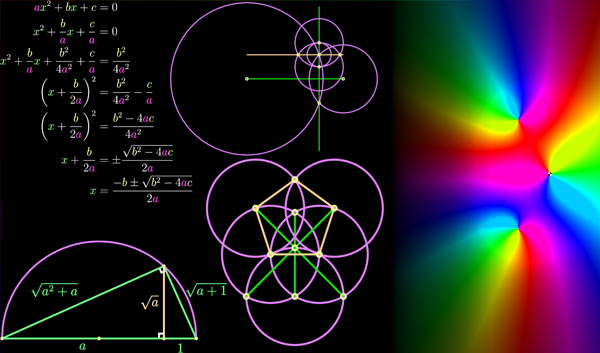abstract algebra

To a mathematician, real life is a special case.
—anonymous
Abstract algebra is algebra that is not confined to familiar number systems, such as the real numbers, but seeks to solve equations that may involve many other kinds of system. One of its aims, in fact, is to ask: what other number systems are there? The term "abstract" refers to the perspective taken in the subject, which is very different from that of high school algebra. Rather than looking for the solutions to a particular problem, abstract algebra is interested in such questions as: When does a solution exist? If a solution does exist, is it unique? What general properties does a solution possess? Among the structures it deals with are groups, rings, fields, and vector spaces. Historically, examples of such structures often arose first in some other field of mathematics, were specified rigorously (axiomatically), and were then studied in their own right in abstract algebra.
Abstract algebra studies algebraic structures and their properties. These structures can be groups, rings, fields, and vector spaces, among others. Abstract algebra is a fundamental branch of mathematics that has applications in a wide range of fields, including computer science, physics, and engineering.
One of the key concepts in abstract algebra is that of a group. A group is a set of elements with a binary operation, called the group operation, that satisfies certain properties. The elements of the group are called the group's members or elements, and the group operation is a function that takes two elements of the group and combines them to produce a third element in the group. The group operation must satisfy a number of properties, including closure, associativity, and the existence of an identity element and inverse elements.
Groups are often used to model symmetry, as they can be used to describe the way that objects can be transformed. For example, the set of all rotations of a square can be represented by a group, with the group operation being the composition of two rotations. Groups can also be used to describe the symmetries of other objects, such as crystals and molecules.
Another important concept in abstract algebra is that of a ring. A ring is a set of elements with two binary operations, called addition and multiplication, that satisfy certain properties. The elements of the ring are called the ring's members or elements, and the operations of addition and multiplication are functions that take two elements of the ring and combine them to produce a third element in the ring. The operations of addition and multiplication must satisfy a number of properties, including closure, associativity, and the existence of an identity element and inverse elements.
Rings are used to model algebraic systems in which there are two types of operations, such as the set of all integers with the operations of addition and multiplication. Rings are also used to model algebraic systems in which there is a notion of "division," such as the set of all polynomials with the operations of addition and multiplication.
Another important concept in abstract algebra is that of a field. A field is a set of elements with two binary operations, called addition and multiplication, that satisfy certain properties. The elements of the field are called the field's members or elements, and the operations of addition and multiplication are functions that take two elements of the field and combine them to produce a third element in the field. The operations of addition and multiplication must satisfy a number of properties, including closure, associativity, and the existence of an identity element and inverse elements.
Fields are used to model algebraic systems in which there is a notion of "division," such as the set of all real numbers with the operations of addition and multiplication. Fields are also used to model algebraic systems in which there is a notion of "inverses," such as the set of all complex numbers with the operations of addition and multiplication.
Vector spaces are another important concept in abstract algebra. A vector space is a set of elements, called vectors, that can be combined using a binary operation called vector addition and a scalar multiplication. Vector spaces are used to model algebraic systems in which there is a notion of "direction," such as the set of all two-dimensional vectors with the operations of vector addition and scalar multiplication. Vector spaces are also used to model algebraic systems in which there is a notion of "length," such as the set of all three-dimensional vectors with the operations of vector addition and scalar multiplication.


